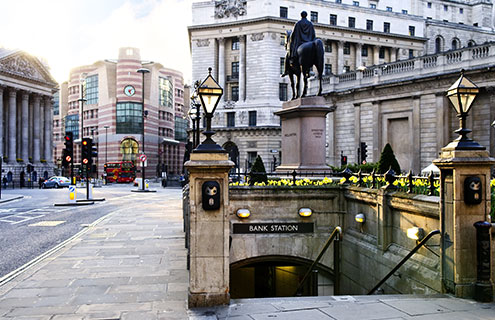The Bank of England has increased its interest rates for the first time since 2007, increasing from 0.25 percent to 0.5 percent.
The increase is intended to help reduce inflation rates in the UK from where it stands now at around 3 percent, to the bank’s 2 percent target.
The bank’s Monetary Policy Committee (MPC) also voted to maintain the stock of sterling non-financial investment-grade corporate bond purchases at £10 billion, and to maintain the stock of UK government bond purchases at £435 billion.
In August last year, the MPC dropped interest rates from 0.5 percent to 0.25 percent, in response to the UK’s vote to exit the EU, and the subsequent drop in value of the pound.
Now, the MPC maintains that the ongoing Brexit process is having a significant effect on the economic outlook.
In its summary, the MPC said: “Monetary policy cannot prevent either the necessary real adjustment as the United Kingdom moves towards its new international trading arrangements or the weaker real income growth that is likely to accompany that adjustment over the next few years. It can, however, support the economy during the adjustment process.”
The summary named the response of financial markets to developments in the Brexit negotiations as a considerable risk to the economic outlook, and said: “Any future increases in bank rate would be expected to be at a gradual pace and to a limited extent.”
Bank of England governor Mark Carney, however, suggested that the bank is planning two additional rate increases of 25 basis point, over the next three years, saying: “We need the additional rate increases in order to get the return of inflation to target.”
However, industry reactions have not been entirely positive, with Paul Mumford of Cavendish Asset Management saying the Bank of England is “between a rock and a hard place on this one”.
He said: “This rise is little more than symbolic, was expected and was factored into share prices and priced into sterling in advance. What’s more likely to cause market movement will be any indications of further, more significant rises … On the plus side, higher rates will be positive for cash-rich companies that are in a position to earn solid interest, and pension funds with large deficits who may be in line for a much needed boost given the impact on bond yields.”
“Although gilts yields will be affected, minimal rises won’t bring returns anywhere near high enough to account for rising inflation—meaning equities remain the more attractive investment.
Eric Lascelles, chief economist at RBC Global Asset Management, added: “The UK is undoubtedly experiencing a bout of high inflation, but so much of it is the temporary detritus of a weak pound that this does not provide a clear hawkish signal for monetary policy. The British economy is beginning to spin its wheels—not the obvious condition for significant tightening.”
“But this moment in time also needs to be viewed as an opportunity to take the policy rate off the floor without incurring too much punishment in currency markets given the fact that other central banks are also edging their way higher.”
However, Andrew Fowkes, head of the retail centre of excellence at SAS UK & Ireland, suggested that the interest-rate rise could offer some relief to the financial sector.
He said: “A period of record-low interest rates, new competition chipping away at profitability and growing compliance pressures have all suppressed margins so consumers should be prepared for an almost instant reaction.”
“However, only those organisations that are in a position to extract insights from the wealth of data available will be able to respond. A unified data analytics framework that leverages a variety of technologies, including artificial intelligence and machine learning, must be in place to move at speed and not get left behind.”
 Image: Shutterstock
Image: Shutterstock 